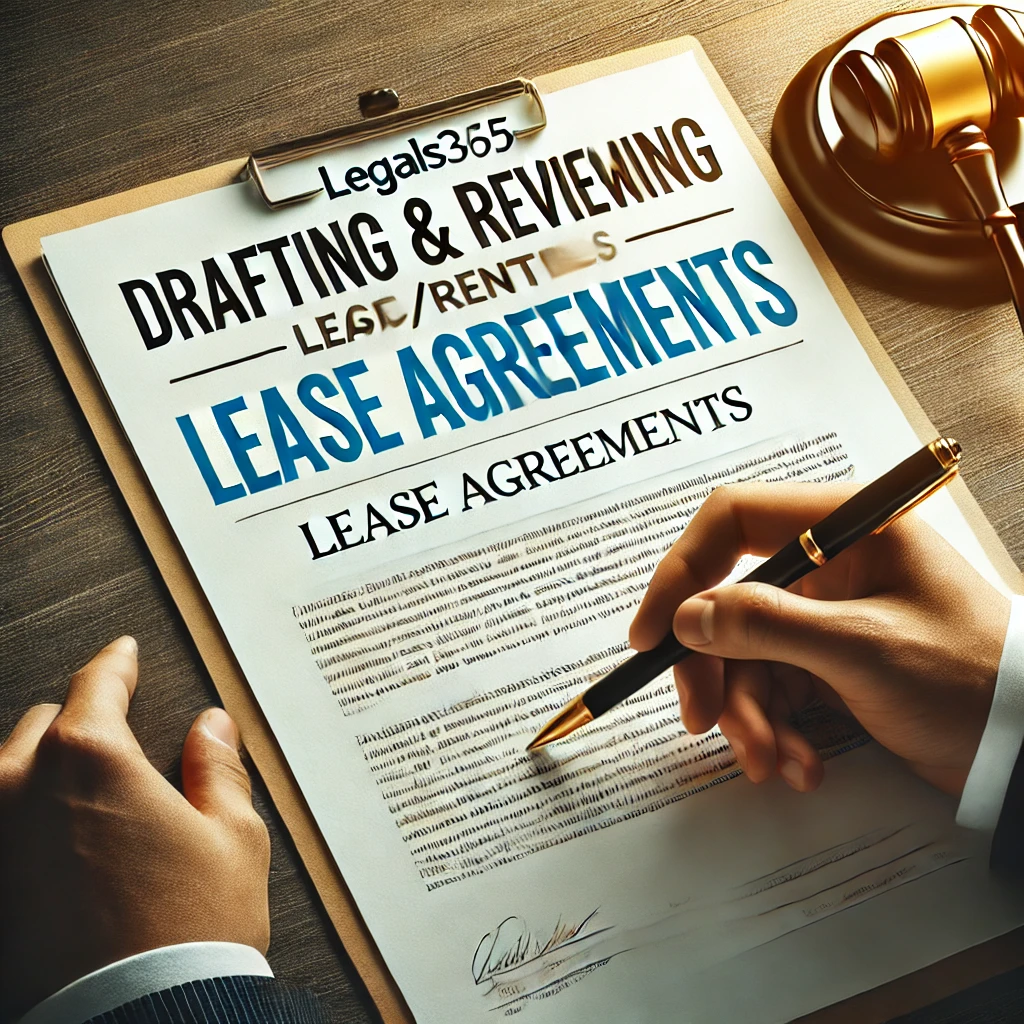
Drafting & Reviewing Lease/Rental Agreements: A Complete Guide
Introduction
A lease or rental agreement is a crucial legal document that defines the terms and conditions between landlords and tenants. Whether you’re a property owner or a tenant, understanding the key elements of a lease agreement can save you from potential disputes and financial risks. This guide walks you through the essential aspects of drafting and reviewing lease agreements to ensure a fair and legally binding contract.
Understanding Lease Agreements
What Is a Lease Agreement?
A lease agreement is a legally binding contract between a landlord and a tenant that outlines the rental terms, including payment details, property usage, and responsibilities of both parties.
Types of Lease Agreements
- Fixed-Term Lease – A lease with a specific duration (e.g., 12 months).
- Month-to-Month Lease – A flexible lease that renews monthly.
- Commercial Lease – Used for business properties with different terms than residential leases.
- Sublease Agreement – A tenant rents out the property to another person while still being responsible to the landlord.
Key Elements of a Lease Agreement
1. Rental Amount and Payment Terms
Clearly mention the rent amount, due date, acceptable payment methods, and late payment penalties.
2. Security Deposit Terms
Outline the security deposit amount, conditions for deductions, and refund policies.
3. Lease Duration and Renewal Terms
Specify the lease term, renewal options, and conditions under which the lease can be terminated early.
4. Maintenance and Repairs
Define landlord and tenant responsibilities regarding property maintenance and repairs.
5. Tenant and Landlord Rights
List out rights and responsibilities to ensure both parties understand their obligations.
6. Usage Restrictions
Include clauses on property usage, subleasing, and any restrictions on modifications or pets.
7. Termination and Eviction Clauses
Detail the conditions under which a lease can be terminated, including notice periods and reasons for eviction.
Reviewing a Lease Agreement: What to Look For
1. Clarity in Terms and Conditions
Ensure the language is clear and legally sound to avoid future disputes.
2. Hidden Fees and Unfair Clauses
Check for excessive penalties, unexpected fees, or clauses that heavily favor one party.
3. Compliance With Local Rental Laws
Verify that the lease complies with state and local rental regulations.
4. Fair Security Deposit Policies
Review the conditions under which the security deposit can be deducted.
5. Dispute Resolution Mechanism
A well-drafted lease should include mediation or arbitration clauses for resolving conflicts.
How Legals365 Can Help
Legals365 provides expert legal support for drafting and reviewing lease agreements, ensuring compliance with local laws and protecting your rights. Our services include:
- Custom lease agreement drafting
- Legal review of rental contracts
- Dispute resolution guidance
- Assistance with landlord-tenant laws
Let Legals365 and Online Noida simplify your lease agreement process and keep your rental transactions legally secure.
Conclusion
A well-drafted lease agreement is essential for a smooth landlord-tenant relationship. Whether you’re signing a new lease or reviewing an existing one, paying attention to legal details can prevent future complications. Seek professional assistance when needed to ensure your lease agreement is legally sound and fair.
Hashtags: #LeaseAgreement #RentalContracts #TenantRights #LandlordGuide #RealEstateLaws #LegalLease #RentalProperty #PropertyManagement #LeaseReview #RentalAgreementTips #HousingLaws #RealEstateInvestment #ContractNegotiation #RentalLegalities #Legals365 #OnlineNoida
